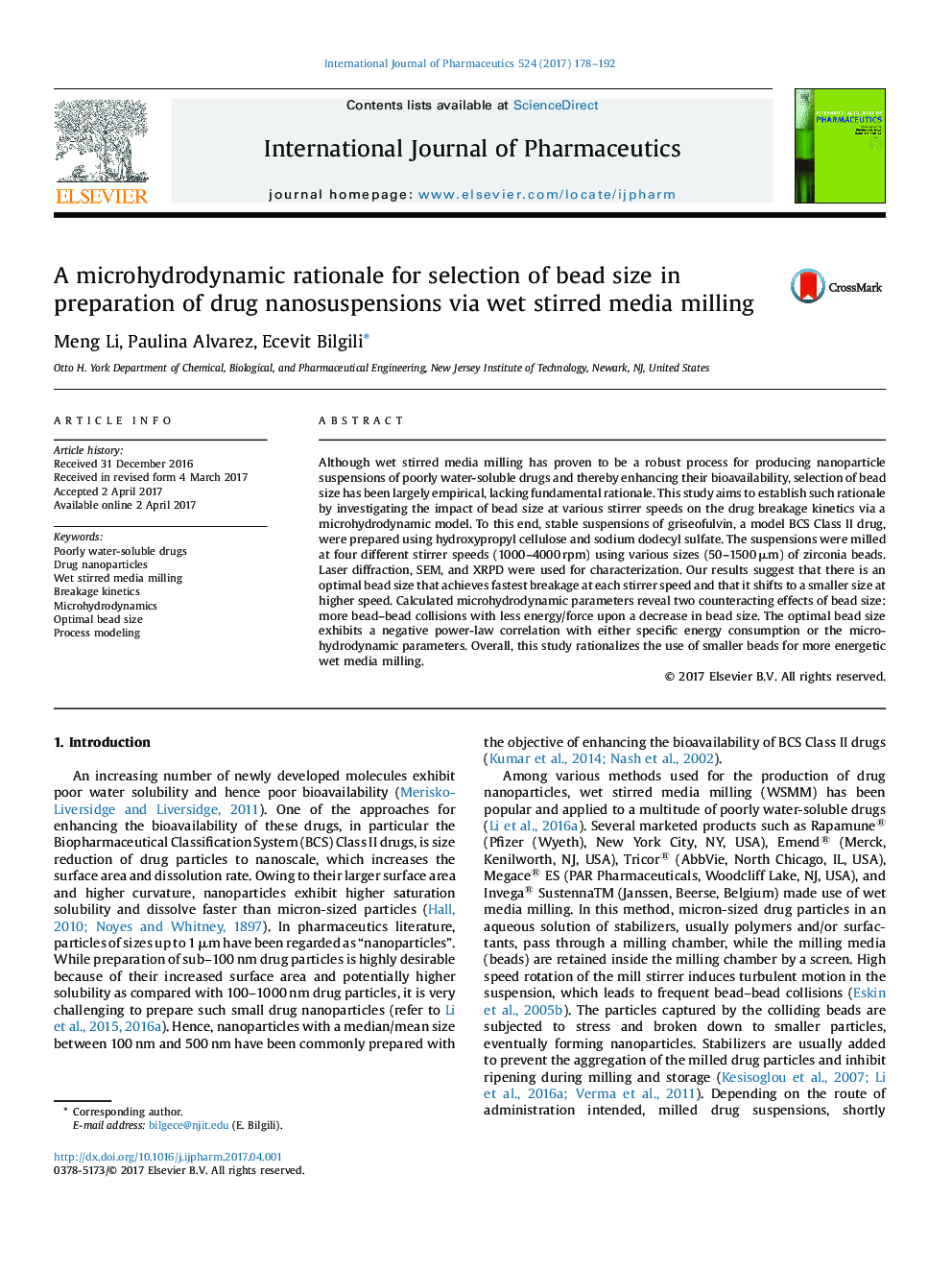| Article ID | Journal | Published Year | Pages | File Type |
|---|---|---|---|---|
| 5550492 | International Journal of Pharmaceutics | 2017 | 15 Pages |
Although wet stirred media milling has proven to be a robust process for producing nanoparticle suspensions of poorly water-soluble drugs and thereby enhancing their bioavailability, selection of bead size has been largely empirical, lacking fundamental rationale. This study aims to establish such rationale by investigating the impact of bead size at various stirrer speeds on the drug breakage kinetics via a microhydrodynamic model. To this end, stable suspensions of griseofulvin, a model BCS Class II drug, were prepared using hydroxypropyl cellulose and sodium dodecyl sulfate. The suspensions were milled at four different stirrer speeds (1000-4000 rpm) using various sizes (50-1500 μm) of zirconia beads. Laser diffraction, SEM, and XRPD were used for characterization. Our results suggest that there is an optimal bead size that achieves fastest breakage at each stirrer speed and that it shifts to a smaller size at higher speed. Calculated microhydrodynamic parameters reveal two counteracting effects of bead size: more bead-bead collisions with less energy/force upon a decrease in bead size. The optimal bead size exhibits a negative power-law correlation with either specific energy consumption or the microhydrodynamic parameters. Overall, this study rationalizes the use of smaller beads for more energetic wet media milling.
Graphical abstractDownload high-res image (164KB)Download full-size image
